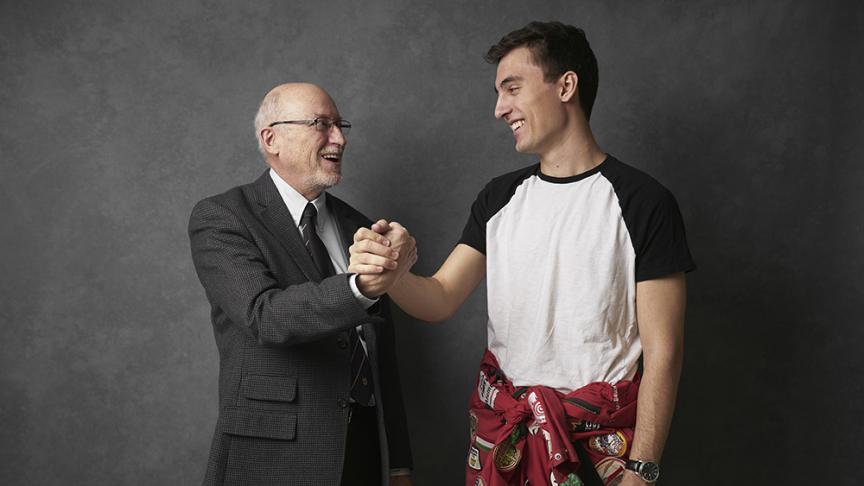Building a strong foundation for collaboration

May 4, 2018
Sunlight poured through open garage doors, illuminating an arc of gold and red balloons that hovered cheerfully above David Wilkinson on stage.
Overcome with emotion, Wilkinson took a long pause and surveyed the room full of engineering student clubs and teams, faculty, staff and donors, and smiled before delivering his speech.
What began as a shared vision between students and faculty under his leadership 10 years ago was complete. The doors of the new Gerald Hatch Centre for Engineering Experiential Learning were finally open on October 18, 2017.
Wilkinson says the 28,000 square foot building dedicated to hands-on-learning was his proudest accomplishment as Dean of the Faculty of Engineering from 2008 to 2012. He credits collaboration as key to the project’s success.
In 2008 student car teams did not have a dedicated workspace on campus.
“One team would hang their car in a closet near the student lounge; others worked from their parents’ garages,” says Wilkinson. “We knew we needed to do better and this meant a dedicated building project just for our students.”
“The leadership of the McMaster Engineering Society (MES) and various car teams recognized that the project was vital to the long-term progression of experiential learning.”
Michael Meier, who joined the MES as vice president, external relations in 2016 and a year later as president, was still in primary school when the Hatch Centre project began in 2008. Meier says in recent years, there was a need for space more than ever.
“People needed places to study, places to work together and meet up – a centralized location for the engineering student community.”
What propelled the project forward was the high turnout at the student referendum in 2012. There was a 75% positive response rate, which meant that most undergraduate engineering students were prepared to give a collective $2 million over 10 years to the $11 million project.
It also meant that students would be engaged to help shape the design of the three-storey space, which includes a massive bay area for car teams, offices for the McMaster Engineering Society, workspace, boardrooms and student support services. As well, the Hatch Centre has a ‘living lab’ to study integrated energy systems for urban use.
“We developed a really good working relationship between the faculty office and the MES office”, says Wilkinson. “And that’s not just raising the funding, but also establishing joint governance around the centre as it develops.”
The active role students played in making the project happen captured the attention of several donors including the building’s namesake, Gerald G. Hatch, the late founder and first president of the global engineering consultancy, Hatch. He donated $2 million toward the project and several Hatch employees contributed funds with the company matching donations totalling more than $1 million. Gennum Corporation co-founder Doug Barber and his wife June contributed $1.5 million and former Chairman and CEO of the Timberland Group of Companies Walter G. Booth donated $1 million.
Since the opening of the Hatch Centre, the innovation playground has been alive with activity. Not only is it the go-to hub for studying, hanging out with friends and hosting events, but it’s also changing the nature of how clubs and teams work.
“They’re sharing the same welding room, woodworking room and bay areas. So now the teams are more collaborative,” says Meier.
The Build Space in Hatch is open 24 hours so teams can work until the wee hours of the morning. “I know the Baja Racing team was working 72 hours straight at one point,” adds Meier.
Wilkinson, who has worked at McMaster since 1979, has seen a lot of change over the years. Since his term as Provost of the University ended in 2017, he has settled back into his previous role as Distinguished University Professor for the Department of Materials Science and Engineering.
“One of the things that I’ve noticed with this generation of young people is if you give them the capabilities, and the tools, and the freedom to explore, they can do absolutely amazing things. And it’s just great to be able to sit back and watch.”
This article is part of a series of profiles celebrating the 60th anniversary of McMaster’s Faculty of Engineering. For more Big Ideas stories, go to the faculty’s website.


